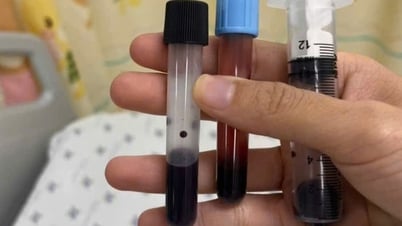At the Discussion - Discussion on medical communication organized by the Ministry of Health on the afternoon of June 14, Deputy Minister of Health Nguyen Thi Lien Huong said "it is expected that this June there will be a decision to move COVID-19 from group A to group B".
According to the Deputy Minister of Health , previously, people with group A infectious diseases would be treated free of charge when entering medical facilities. If COVID-19 moves to group B, there will be changes in payment for treatment costs. People with health insurance cards who are treated for COVID-19 will be paid health insurance according to the level of benefits stated on the card. COVID-19 has been included in Circular No. 20/2022/TT-BYT on health insurance payments.
The Ministry of Health stated 3 reasons for proposing to adjust COVID-19 from group A to B.
Firstly, according to the World Health Organization, SARS-CoV-2 is still a virus with a fast transmission rate. However, in Vietnam, the number of cases and mortality rates have decreased sharply, equivalent to or lower than the mortality rates of some group B infectious diseases in the past 5 years such as dengue fever, malaria, diphtheria, whooping cough, etc.
Second, the causative agent of COVID-19 has been clearly identified as the SARS-CoV-2 virus.
Third, this disease currently meets the criteria for group B infectious diseases as prescribed in the Law on Prevention and Control of Infectious Diseases.
Previously, on June 3, 2023, at the 20th Session, the National Steering Committee for COVID-19 Prevention and Control agreed to meet the conditions to transfer COVID-19 from group A to group B. This is an important milestone marking the success in COVID-19 prevention and control in Vietnam.
According to Deputy Minister Nguyen Thi Lien Huong, the Ministry of Health has worked with the Ministry of Justice to advise the Prime Minister on the decision to transfer COVID-19 from a group A infectious disease to a group B infectious disease. The professional decision to transfer a group A infectious disease to a group B infectious disease is decided by the Ministry of Health.
These two decisions will be made simultaneously. At the same time, the Ministry of Health and other ministries and sectors are revising all professional guidelines such as: guidelines for monitoring and preventing COVID-19; guidelines for diagnosis and treatment; guidelines for preventing and controlling infections in medical facilities...
“The transition from group A to group B is expected to take place in June 2023. When the Prime Minister signs the announcement of the expiration of Decision 447, the Ministry of Health will simultaneously sign and issue guidelines on the transition of COVID-19 from group A to group B,” Deputy Minister Nguyen Thi Lien Huong emphasized.
Also related to this issue, Director of the Department of Preventive Medicine (Ministry of Health) Phan Trong Lan said: Vietnam's infectious disease surveillance system always monitors the epidemic situation synchronously.
According to Director Phan Trong Lan, when switching from group A to group B, according to the Law on Prevention and Control of Infectious Diseases, the classification is mainly based on pathology. In Vietnam, group A is mainly social administrative measures, when switching to group B, social administrative control activities are eliminated. In other words, if it is group A, in addition to the health sector, there will be ministries and sectors participating in the fight against the epidemic. When switching to group B, it is mainly the health sector that implements it.
According to information from the Ministry of Health, from the beginning of 2023 to May 29, 2023, the whole country recorded 85,493 COVID-19 cases, an average of 17,000 cases per month (8.5 times lower than in 2021, 48 times lower than in 2022); recorded 20 deaths due to COVID-19, the mortality rate dropped sharply to 0.02% (1.86% in 2021, 0.1% in 2022).
The deaths recorded during this period were all cases with serious underlying diseases that were being treated before, most of them had a history of not having received enough doses of COVID-19 vaccine. Currently, the rate of COVID-19 patients being hospitalized is lower; the rate of severe cases is also reduced to the same level or lower than some group B infectious diseases.
The number of COVID-19 vaccine doses administered per 100 people in Vietnam is 1.6 times higher than the world average. The rate of primary vaccination is 1.4 times higher than the world average and the rate of booster vaccination is 2 times higher than the world average./.
Source



































































































Comment (0)